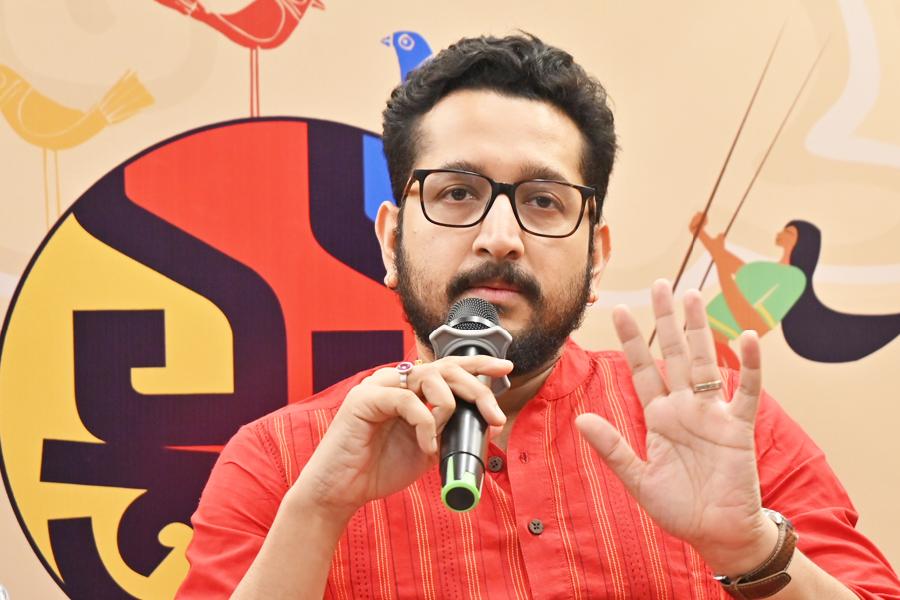Actor-filmmaker Parambrata Chattopadhyay on Saturday said it was time to dismantle the binaries that have long shaped how Bengalis view two of their most towering cinematic figures — Satyajit Ray and Ritwik Ghatak.
Speaking at a panel discussion dedicated to Ghatak at the Apeejay Bangla Sahitya Utsob, the actor — who is also the late filmmaker’s grandnephew — said the Bengali audience has mythologised its icons to the point where honest criticism feels almost sacrilegious.
“We have created a binary, pitting two icons against each other,” he said. “Ray is seen as a saintly, colossal figure who can commit no mistake. His films are placed beyond critique. On the other side stands Ghatak, portrayed as a dishevelled man with a bottle of country liquor in his jhola. Both images are oversimplified and unfair.”
Chattopadhyay emphasised that both directors deserve a more nuanced reading. “Ray was not just the serious-faced intellectual that he’s made out to be — he had wit and humour. And Ghatak was not merely a drunkard; he was learned, practical and deeply engaged with the struggles of life.”
As the world marks the centenary of Ghatak’s birth this year, the festival revisited his legacy through conversation and critique. Chattopadhyay, however, didn’t shy away from candour.
“I openly say that I do not like all the films directed by Ritwik Ghatak. That’s how it is. They weren’t made to entertain me,” he said, adding that his own cinematic sensibilities were shaped by mainstream narrative forms.
“Viewers like to see drama on screen. I grew up watching Hollywood movies, watching stories unfold. But cinema is not only about telling stories,” he noted. “Ritwik’s films taught me that cinema can tell stories — but that’s not its only job.”
While Ghatak’s works were often difficult for the average viewer to grasp, they carried a purpose far beyond storytelling, said Chattopadhyay. “He used cinema as a means to slap us awake — to show how the history of human civilisation and of cinema itself has been destroyed. Ninety per cent of the audience may not grasp that, but he tried, and that’s what mattered.”
Chattopadhyay also reflected on how Bengali cinephilia remains split between reverence and romanticism. “If Ray and Ghatak are the two towering figures of Bengali cinema, we have polarised them into opposite ends — one a saint, the other a tragic genius. But both, in their intellect, knowledge and creative depth, were equals,” he said.
“Ghatak thought differently. That’s why his films looked and sounded different — be it a camera frame, a narrative rupture, or the harsh sound of a train in a scene of death,” he added.

